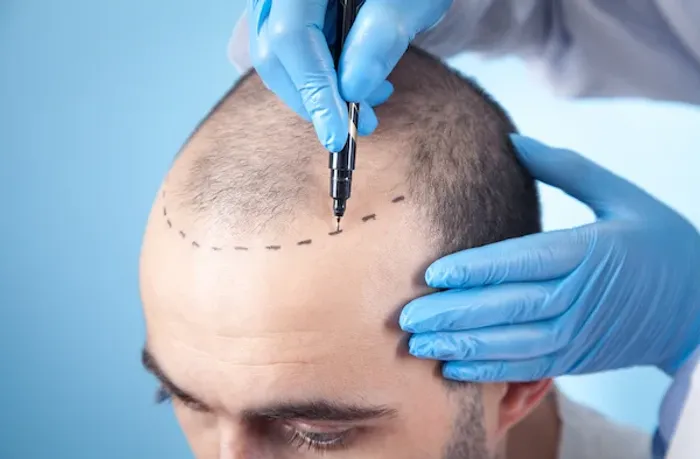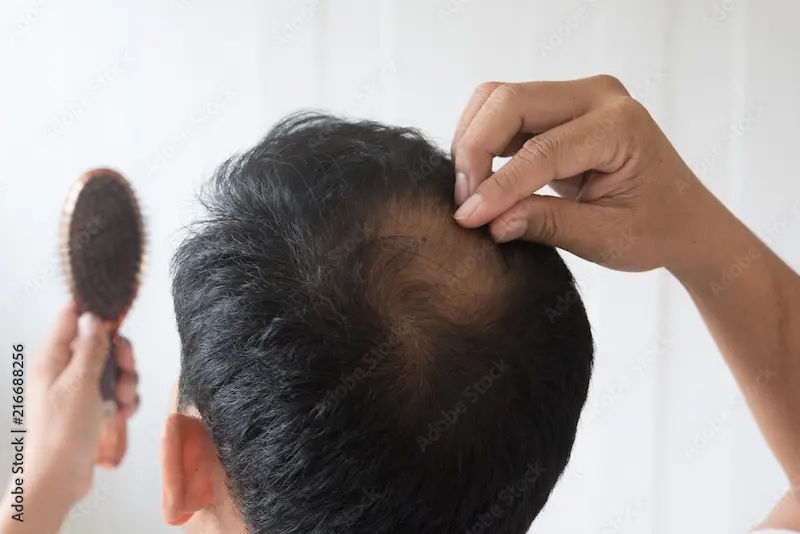Guide to Hair Transplant: Costs, Procedures, and Recovery
Discover everything about hair transplants — from FUE vs. FUT techniques to pricing, recovery timeline, and long-term maintenance for lasting results.


Introduction
Hair loss can be a source of significant concern for many, impacting self-esteem and confidence. If you've been exploring permanent solutions, you've likely encountered the term "hair transplant." But what exactly does this procedure entail? Is it the right choice for you? This comprehensive guide demystifies the world of surgical hair restoration. We will walk you through everything—from understanding the fundamental principles of a hair transplant to evaluating your candidacy, comparing different techniques like FUE and FUT, and navigating the recovery process. We'll also discuss the realistic costs, potential risks, and the crucial steps for maintaining your results long after the procedure. Whether you're just starting your research or are seriously considering taking the next step, this article aims to be your trusted resource, providing the clarity and insight you need to make an informed decision about restoring your hair and confidence.
What is a Hair Transplant? A Modern Solution for Hair Loss
A hair transplant is a surgical procedure designed to combat hair loss by moving hair follicles from one part of the body (called the "donor area," typically the back or sides of the scalp where hair is genetically resistant to balding) to the bald or thinning areas (the "recipient area"). It's essentially a redistribution of your existing hair resources. The concept is based on the principle of "donor dominance," which means that transplanted hair retains the characteristics of its original site. So, hair taken from the back of your head will continue to grow for a lifetime, even when moved to a balding area. Modern techniques have evolved significantly from the obvious "plugs" of the past, now allowing for the transplantation of individual follicular units—tiny groupings of 1-4 hairs—to create incredibly natural-looking results. This medical advancement has made hair transplants a highly sought-after and effective long-term solution for pattern baldness in both men and women.
Consult a Specialist for the best advice
Are You a Candidate? Understanding Eligibility for a Hair Transplant
Not everyone experiencing hair loss is an ideal candidate for a transplant. The success of the procedure hinges on several key factors. A thorough evaluation by a qualified professional is essential, but understanding the basic criteria can help you set realistic expectations from the start.
The Ideal Candidate Profile
The best candidates for a hair transplant are typically individuals who:
Have sufficient donor hair: This is the most critical factor. There must be enough healthy hair follicles in the donor area to harvest and transplant without over-thinning that region.
Experience male or female pattern baldness (Androgenetic Alopecia): This is the most common type of hair loss treated with transplants.
Have stable hair loss: While younger men in their 20s can be candidates, surgeons often advise waiting until hair loss patterns have stabilised to ensure the transplanted hair blends seamlessly with the native hair over time.
Are in good general health: Underlying health conditions can affect healing and surgical risk.
Have realistic expectations: A transplant can restore hair, but it may not achieve the exact density of your teenage years. Understanding the limitations is crucial for satisfaction.
Realistic Expectations: What a Transplant Can and Cannot Do
It's vital to understand that a hair transplant does not create new hair. It redistributes what you already have. Therefore, it cannot treat widespread thinning across the entire scalp if there isn't a stable donor supply. It is excellent for restoring a receding hairline, filling in thinning crowns, and adding density. However, it will not prevent the progression of natural balding in non-transplanted areas, which is why ongoing medical therapy is often recommended.
The Science Behind the Procedure: How Hair Transplants Work
The Principle of Donor Dominance
The entire foundation of a successful hair transplant rests on the scientifically proven principle of "donor dominance." Discovered by dermatologist Dr. Norman Orentreich in the 1950s, it states that hair follicles maintain their genetic characteristics regardless of where they are transplanted on the body. Hair on the back and sides of the scalp is genetically programmed to be resistant to the hormone dihydrotestosterone (DHT), which causes pattern baldness. When these DHT-resistant follicles are moved to the top of the head, they continue to behave as if they were still in their original location—growing healthily for a lifetime. This is why the results of a well-performed transplant are considered permanent.
Types of Hair Transplant Procedures: FUT vs. FUE vs. DHI
When researching, you'll primarily encounter two main techniques, with a third advanced variation gaining popularity. Understanding the differences is key to choosing the right method for you.
Follicular Unit Transplantation (FUT) - The Strip Method
In FUT, the surgeon removes a thin, linear strip of tissue from the donor area. This strip is then dissected under a microscope into individual follicular units or grafts. The donor area is closed with sutures or staples, leaving a linear scar that is typically hidden by the surrounding hair. The primary advantage of FUT is that it allows for the harvesting of a large number of grafts in a single session, making it efficient for patients requiring extensive coverage.
Follicular Unit Extraction (FUE) - The Scarless Approach
The FUE hair transplant method has become increasingly popular. Instead of removing a strip, the surgeon uses a tiny punch tool (typically 0.8-1.0mm in diameter) to extract individual follicular units directly from the donor area. This leaves tiny, dot-like scars that are virtually undetectable to the naked eye, even with very short haircuts. The FUE procedure is less invasive than FUT, involves no linear scar, and generally has a quicker recovery time. However, it can be more time-consuming and may not be suitable for harvesting as many grafts in one session as FUT.
Direct Hair Implantation (DHI) - The Advanced Technique
DHI is an advanced variation of FUE. The key difference lies in the implantation tool. In standard FUE, the recipient sites are created first, and then the grafts are placed into them. With DHI, a specialised pen-like tool called a Choi implanter is used. This tool creates the recipient site and implants the graft simultaneously. Proponents argue that this reduces the "out-of-body" time for the grafts, potentially leading to higher survival rates, and allows for more precise control over the angle and direction of the implanted hair.
FUT vs. FUE: A Quick Comparison Table
| Feature | FUT (Strip Method) | FUE (Follicular Unit Extraction) |
| Scarring | Linear scar | Tiny, dot-like scars |
| Session Size | Larger grafts per session | Moderate grafts per session |
| Recovery Time | Longer, more discomfort | Shorter, less discomfort |
| Best For | Patients needing maximum coverage, longer hair | Patients who prefer short hairstyles, minimal scarring |
| Cost | Often less expensive per graft | Often more expensive per graft |
What to Expect: The Hair Transplant Journey, Step-by-Step
The Initial Consultation: Your Blueprint for Success
This is the most critical step. A reputable surgeon will assess your scalp, discuss your goals, review your medical history, and explain the realistic outcomes. They will create a plan for your natural hairline design and estimate the number of grafts needed. This is the time to ask questions about their experience, view before and after photos of previous patients, and understand the total hair transplant cost.
The Day of the Procedure: A Walkthrough
The procedure is typically performed under local anaesthesia, meaning you'll be awake but comfortable and free of pain. The day involves:
Harvesting: The donor hair is harvested via either FUT or FUE.
Graft Preparation: The harvested follicles are carefully sorted and prepared.
Site Creation: Tiny incisions are made in the recipient area with artistic precision to mimic natural hair growth.
Implantation: The grafts are meticulously placed into the created sites.
The entire process can take anywhere from 4 to 8 hours or more, depending on the number of grafts.
The Road to Recovery: Post-Operative Care and Timeline
A proper hair transplant recovery is crucial for optimal results. Your clinic will provide detailed instructions.
The First Week: Managing Discomfort and Swelling
The first few days involve some redness, swelling, and minor discomfort, which can be managed with medication. You'll need to sleep with your head elevated and avoid touching the grafts.
Months 1-3: Understanding "Shock Loss"
Around 2-8 weeks post-op, the transplanted hairs will shed. This is a normal part of the process called "shock loss." The hair follicle remains alive beneath the skin. It's important not to be alarmed during this phase.
Months 4-12: Watching Your New Hair Grow
New growth typically begins around the 3-4 month mark. The hair will start thin and fine but will gradually thicken and mature over the following months. Most patients see about 60% of the new growth by 6 months, with final results visible at 12-18 months.
Hair Transplant Cost: A Breakdown of the Investment
The cost of a hair transplant is highly variable and rarely has a flat fee. It is typically calculated per graft. The price can range from $3 to $10 or more per graft. Therefore, a procedure requiring 2,000 grafts could cost between $6,000 and $20,000.
Factors That Influence the Final Price
Several factors determine the overall cost of a hair transplant procedure:
Number of Grafts: The most significant factor.
Surgeon's Expertise and Reputation: Highly experienced surgeons command higher fees.
Geographic Location: Costs vary by country and city.
Technique Used: FUE/DHI is often more expensive per graft than FUT.
Clinic Facilities.
Risks, Side Effects, and How to Ensure a Safe Procedure
Like any surgery, hair transplants carry potential risks, though serious complications are rare when performed by a qualified professional. Common side effects include swelling, itching, numbness, and temporary shock loss of existing hair. More significant risks include infection, bleeding, visible scarring, and unnatural-looking results. The single most important factor in minimising risks is choosing a certified, experienced, and reputable surgeon. If you experience signs of infection like persistent fever or worsening redness and pus, consult a doctor online with Apollo24|7 for further evaluation.
Life After a Transplant: Maintaining Your Results Long-Term
A transplant addresses existing baldness, but it does not stop the natural progression of genetic hair loss. To protect your existing non-transplanted hair and maintain the overall aesthetic of your result, your surgeon may recommend ongoing treatments. These can include FDA-approved medications like topical Minoxidil or oral Finasteride, which help slow down further hair loss. If you are considering medical therapy, it's important to discuss the options with a dermatologist. You can book a physical visit to a specialist with Apollo24|7 to create a personalised long-term maintenance plan.
Conclusion: Is a Hair Transplant Right for You?
A hair transplant can be a life-changing procedure, offering a permanent and natural-looking solution to hair loss. However, it is a significant decision that requires careful consideration of your candidacy, expectations, and financial investment. The journey involves thorough research, selecting the right surgeon, and committing to a proper recovery and long-term maintenance plan. By arming yourself with accurate information, you can move forward with confidence. If you believe you are a candidate, the next step is to schedule consultations with board-certified dermatologists or plastic surgeons to discuss your personal goals and develop a tailored treatment plan. The path to restoring your hair is a marathon, not a sprint, but for many, the results are well worth the journey.
Consult a Specialist for the best advice
Consult a Specialist for the best advice
Dr. Mayuri Jain
Dermatologist
11 Years • MBBS, MD Dermatology , Venereology & Leprosy
Delhi
Dr Mayuri Jain Clinic, Delhi
Dr. Kavitha Killaparthy
Dermatologist
23 Years • MBBS,DIPLOMA(DERMATOLOGY,VENEREOLOGY,LEPROSY)
Hyderabad
JDS Skin & Hair Clinic, Hyderabad

Dr. Ashwini T
Dermatologist
8 Years • MBBS, MD ( DERMATOLOGY )
Bengaluru
Apollo Clinic, JP nagar, Bengaluru
Dr.j Girishma
Dermatologist
6 Years • MBBS MD DERMATOLOGY
Bengaluru
Apollo Medical Center, Marathahalli, Bengaluru

Dr. Madhab Datta
Dermatologist
5 Years • MBBS, MD (DVL)
Kolkata
Dr. Madhab Datta's Clinic, Kolkata
More articles from alopecia areata
Frequently Asked Questions
1. Is a hair transplant painful?
The procedure itself is performed under local anaesthesia, so you should not feel pain. You may feel some minor pricking during the anaesthesia injections and some pressure during the process. Post-operative discomfort is typically mild and managed with pain medication.
2. How long do hair transplant results last?
Since the transplanted hair is genetically resistant to balding, the results are considered permanent. The transplanted hair should continue to grow for a lifetime.
3. Can women get hair transplants?
Absolutely. Women experiencing female pattern hair loss, especially if it's concentrated in specific areas like the frontal hairline or part line, can be excellent candidates. The evaluation process is similar to that for men.
4. What is the best age to get a hair transplant?
There's no universal 'best age.' It's more about the pattern and stability of your hair loss. Many surgeons recommend waiting until your mid-to-late 20s or 30s when your hair loss pattern is more predictable.
5. Are there non-surgical alternatives to a hair transplant?
Yes, non-surgical options like medications (Minoxidil, Finasteride) and low-level laser therapy (LLLT) can help slow down hair loss and improve thinning but cannot recreate the density of a surgical transplant.

